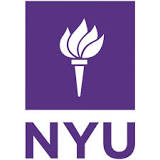A Multicenter Prospective Study of Quality of Life in Adult Scoliosis
| Status: | Active, not recruiting |
|---|---|
| Conditions: | Orthopedic |
| Therapuetic Areas: | Orthopedics / Podiatry |
| Healthy: | No |
| Age Range: | 40 - 80 |
| Updated: | 5/10/2017 |
| Start Date: | April 2010 |
| End Date: | February 28, 2023 |
This is a multicenter study evaluating the effectiveness of nonoperative and operative
treatments. The investigators wish to identify important clinical and radiographic
determinants of outcomes in the management of adults with symptomatic lumbar scoliosis
(ASLS).
Note: Enrollment was complete July 2014. NIAMS funding ended 2/28/17. We continue to follow
enrolled subjects while we seek additional funding to follow all subjects through 8 years.
treatments. The investigators wish to identify important clinical and radiographic
determinants of outcomes in the management of adults with symptomatic lumbar scoliosis
(ASLS).
Note: Enrollment was complete July 2014. NIAMS funding ended 2/28/17. We continue to follow
enrolled subjects while we seek additional funding to follow all subjects through 8 years.
Specific Aim #1: Compare the outcomes of surgery and nonoperative treatment in patients aged
40 to 80 with ASLS defined as a lumbar curve with a coronal Cobb measurement ≥ 30°, and
either of the following: Oswestry (ODI) score of 20 or more; or Scoliosis Research Society
Quality of Life instrument (SRS-QOL) score of 4.0 or less, in the domains of pain, function
and/or appearance.
Specific Aim #2: Evaluate the impact of patient factors (age, gender, socioeconomic status,
education) and comorbidities [mental health, body mass index (BMI) and bone mineral density
(BMD)] on adverse events and treatment outcomes for both the nonoperative and operative
arms. Incorporate these variables into a prediction model to help identify those patients
most likely to benefit from either a surgical or nonoperative approach
40 to 80 with ASLS defined as a lumbar curve with a coronal Cobb measurement ≥ 30°, and
either of the following: Oswestry (ODI) score of 20 or more; or Scoliosis Research Society
Quality of Life instrument (SRS-QOL) score of 4.0 or less, in the domains of pain, function
and/or appearance.
Specific Aim #2: Evaluate the impact of patient factors (age, gender, socioeconomic status,
education) and comorbidities [mental health, body mass index (BMI) and bone mineral density
(BMD)] on adverse events and treatment outcomes for both the nonoperative and operative
arms. Incorporate these variables into a prediction model to help identify those patients
most likely to benefit from either a surgical or nonoperative approach
Inclusion Criteria:
- aged 40 to 80 years with
- ASLS defined as lumbar curve with a coronal Cobb measurement ≥ 30°, and either of the
following: Oswestry Disability Index (ODI) score ≥ 20 or SRS-QOL score ≤ 4.0 in the
domains of pain, function and/or appearance.
- If assigned to surgical intervention (by randomization or patient preference), the
intervention plan would include, at a minimum, the Cobb levels of the
Thoracolumbar/lumbar spine.
Exclusion Criteria:
- Substantial cardiac, pulmonary, renal or metabolic disease that, in the judgment of
the surgical team, would preclude performing an operative procedure without undue
risk of morbidity and mortality
- Concomitant high-grade spondylolisthesis (Grade 3)
- Prior thoracic or multiple level lumbar laminectomy or decompression [single or two
level lumbar decompression (e.g., herniated disc) will not be an exclusion]
- Prior thoracic or lumbar fusion
- Osteoporosis evidence by a dual-energy x-ray absorptiometry (DEXA) T-score <-3.0 at
hip or lumbar spine for patients considered to be at risk (post menopausal females,
males > 60 years of age, steroid dependent rheumatoid arthritics, status post organ
transplantation, etc.). Patients may be randomized prior to obtaining DEXA results.
Non Surgical patients may initiate non surgical treatments prior to completion of
DEXA (if required) as non surgical treatments will not affect DEXA results BUT DEXA
must be completed and results entered within 3 months of enrollment. Surgical patient
must have DEXA prior to surgical intervention.
- Neuromuscular scoliosis (e.g., spinal muscular atrophy, cerebral palsy, Parkinson's
Disease, post-polio syndrome, Charcot Marie Tooth disease)
- Congenital scoliosis in the lumbar spine. Congenital anomalies of the cervical or
thoracic spine are acceptable.
- Spine tumor, infection or connective tissue disorder
- Cognitively impaired or unable/unwilling to comply with follow-up
- Pregnancy or planning on conceiving during time of study involvement
- Ankylosing Spondylitis
- Past history of vertebroplasty or kyphoplasty of the thoracic or lumbar spine
We found this trial at
8
sites
Click here to add this to my saved trials
University of Virginia The University of Virginia is distinctive among institutions of higher education. Founded...
Click here to add this to my saved trials
Click here to add this to my saved trials
University of Louisville The University of Louisville is a state supported research university located in...
Click here to add this to my saved trials
New York University More than 175 years ago, Albert Gallatin, the distinguished statesman who served...
Click here to add this to my saved trials
Hospital for Special Surgery Founded in 1863, Hospital for Special Surgery is the nation
Click here to add this to my saved trials
Click here to add this to my saved trials
Click here to add this to my saved trials



